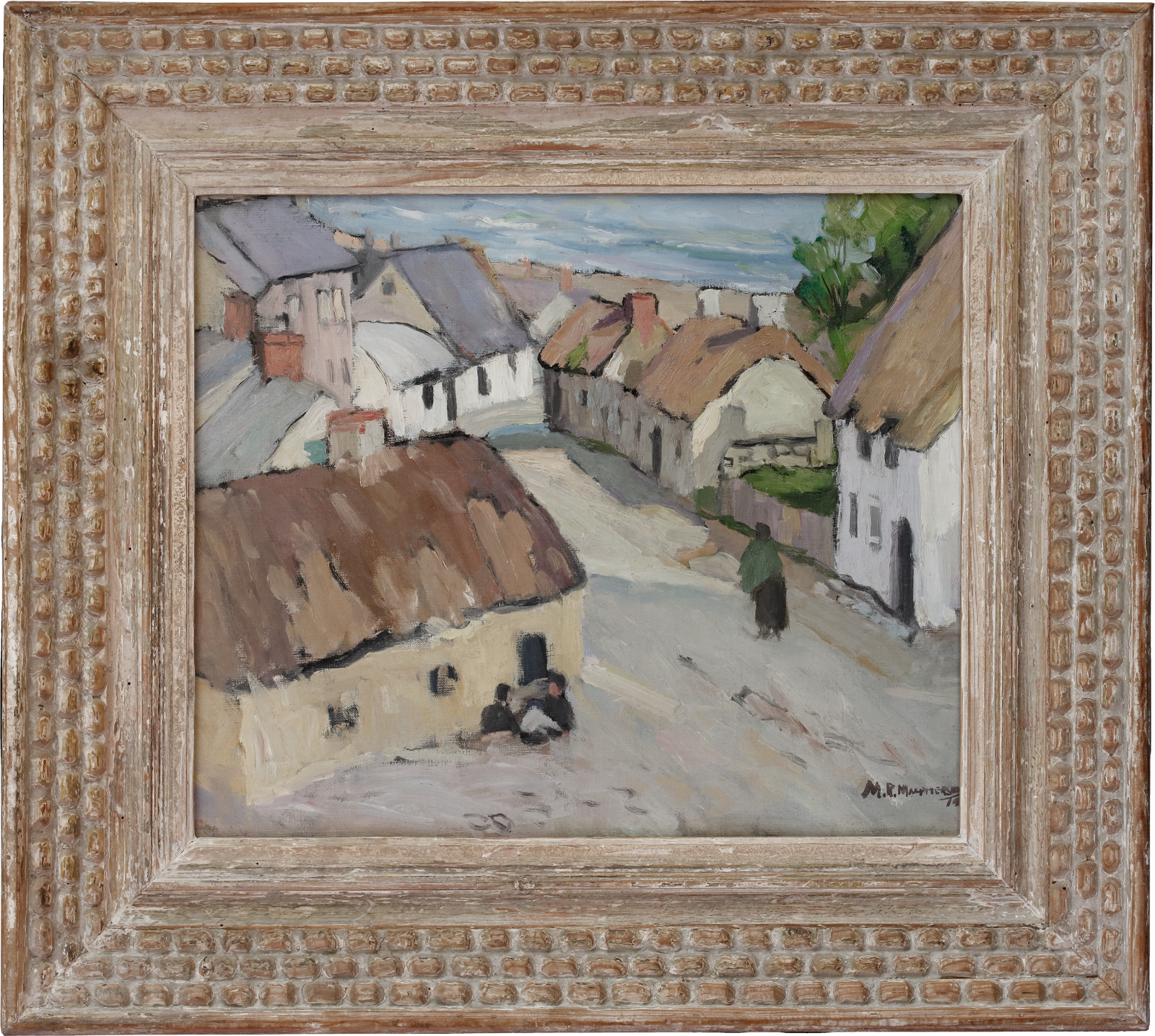
Margaret Rose Preston
This beautiful landscape of an Irish coastal village was painted at the onset of the First World War, months before the government placed stringent prohibitions on sketching and photographing near the Irish coast. Painted by the Australian artist Margaret Preston (formerly MacPherson) during the year of her debut at the Royal Academy of Arts, it offers an immediate and honest depiction of a peaceful village, undisturbed by the destructions of war. Today, Preston is heralded as one of Australia’s most respected twentieth-century artists and is celebrated internationally as a master colourist.
Preston’s early career was shaped by her admiration of European modernism, which first grasped her attention when she visited Munich and Paris in 1904. The fauvists in particular enlivened Preston’s colourist sensibilities, and their principles remained important to her practice throughout her career. Equally formative in the development of her distinctive artistic language was the bold colour and linear structure of Japanese ukiyo-e prints, which she first admired at the Musée Guimet in Paris.[1] This landscape is representative of a culmination of Preston’s early influences, which by this date included Roger Fry’s formalist principles on art.
This oil on canvas was painted in the Irish coastal village of Bonhamon, an old mining village in County Waterford, Ireland, at the mouth of the River Mahon. In March 1914 Preston and her close friend - the potter Gladys Reynell - went on a short sojourn to Ireland, which they enjoyed so much that they returned the following month, staying until October. During this time, Preston experimented with landscape painting, an aspect of her oeuvre that remains relatively unexplored today. Here, Preston maintains a strong sense of perspective whilst successfully mastering a sophisticated implementation of colour blocking. The contours of each house are beautifully delineated in dark, linear strokes of paint which contain the bold blocks of colour constituting each house. The gradual retreat of the winding road echoes the slow footsteps of the small figure depicted strolling along its path. Preston was struck by the poverty of the village and distributed spare clothes which had been sent from friends at home.[2] Her admiration for the village’s inhabitants is arguably apparent in this evocative depiction of their homes. An etching of a near-identical view, currently in the collection of The Art Gallery of New South Wales, further demonstrates her emotive connection with the landscape [fig. 1]. At this point in her career, Preston was preoccupied with painting however, she is today equally recognised as a bold and skilful printmaker.
In a photographic postcard that Preston sent home to her friend the artist Edith Collier, a very similar set of houses in Bonhamon is depicted, with a small x to indicate her accommodation [fig. 2]. The following year, Collier joined her in the same village as one of a group of twenty students that Preston taught over the course of seven months. Unfortunately, their studies were concluded when Preston was forced to explain to her students that; ‘No member of the public is permitted to sketch or to take photographs of the coast’ and that any attempt to do so would be reported. Preston’s students nonetheless found her to be a strong-willed and inspiring teacher. Later in her career, one student recalled; ‘We were instructed to set up our own subjects which quite often did not meet with Miss MacPherson's approval. I remember once when I had arranged a study of a coloured bottle, some eggs and pomegranates all sitting up very sedately, but Miss McPherson lost no time in cracking open the eggs, breaking open the fruit and scattering a few seeds around and then said 'carry on'.’
Preston is heralded today as one of Australia’s most significant twentieth-century artists, and her influence on the landscape of the country’s painting is marked. Maintaining that art should be accessible to all, she taught and published widely on all forms of artistic production from painting to pottery, making a name for herself as 'an enemy of the dull' through the strength of her vivacious personality.[3] [4]
[1] R. Peel, ‘Margaret Preston A material girl explained’, 4th Book, Paper & Photographs Symposium, AICCM Symposium 2006, 19-21 April 2006, Wellington, New Zealand, p.21. Available online: https://aiccm.org.au/conference-proceedings/margaret-preston-a-material-girl-explained/ [Accessed 7.02.2023].
[2] R. Butler, The Prints of Margaret Preston: A Catalogue Raisonne. Parks: The National Gallery of Australia, 2005, p.11.
[3] L. Harding, Margaret Preston: recipes for food and art. Melbourne: Melbourne University Publishing, 2016.
[4] R. Butler, The Prints of Margaret Preston: A Catalogue Raisonne. Parks: The National Gallery of Australia, 2005.
Provenance
Property of a Lady of Title;Thence by family descent until sold 2022.
Be the first to hear about our available artworks
* denotes required fields
We will process the personal data you have supplied in accordance with our privacy policy (available on request). You can unsubscribe or change your preferences at any time by clicking the link in our emails.